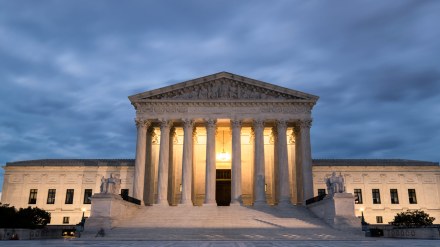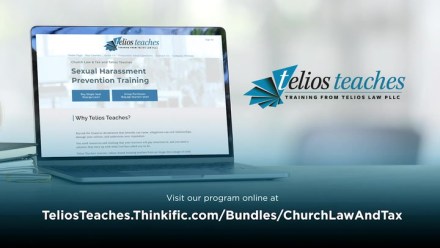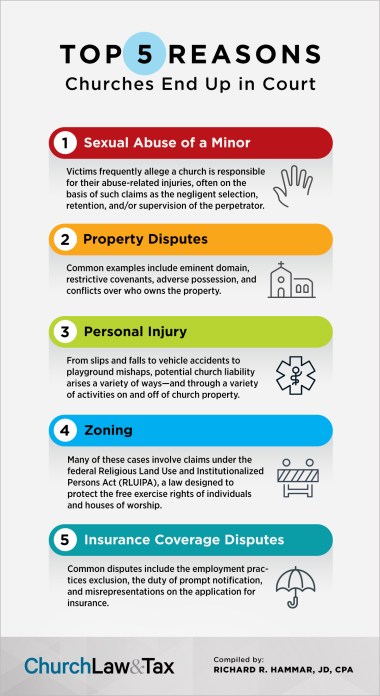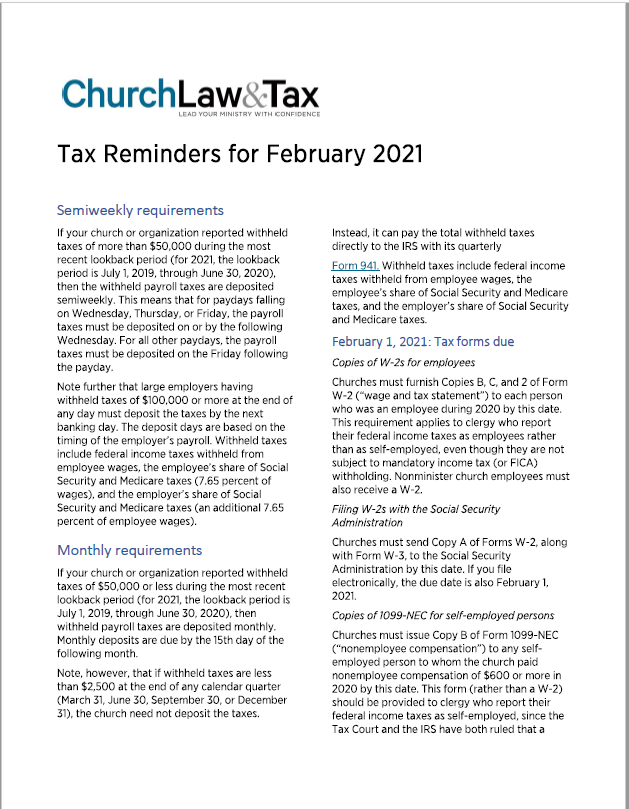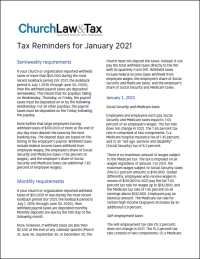The novel COVID-19 virus presented numerous medical, social, and political challenges as it spread across the United States in 2020.
It also posed many legal questions. As state and health officials sought to slow the virus, many mandated temporary lockdowns and prohibited people from assembling in public places, including those who desired to gather for worship, prayer, and fellowship at church events and services. Some churches complied. Others resisted. Legal challenges brought by churches quickly emerged.
Those challenges reached conflicting results in various federal courts around the country, setting the stage for the US Supreme Court to eventually weigh in. In May of 2020, a deeply divided Court said California’s restrictions remained constitutionally permissible for at least the time being. In Chief Justice John Roberts’s concurring opinion with the decision, he cautioned state leaders about the protections afforded to religious exercise.
In subsequent decisions, the Court’s posture shifted. A majority of justices began seeing the state restrictions as an uneven treatment of churches—and thus unconstitutional—whether in the prohibition of gathering for worship services or through various occupancy limits for those activities.
The Court’s majority became especially focused on the way state governments issued executive orders. As written, the orders sounded neutral and generally applicable to the public. But when actually applied, the majority found the religious activities were substantially burdened more than comparable businesses and secular organizations—and often without the government able to justify such treatment.
What this means for churches
The COVID-19 pandemic will be remembered for many things. Among them will be the precedents set by the Supreme Court with respect to the treatment of churches when government-related laws or orders arise during a crisis.
Consider the following three points:
- First, at least six justices of the Supreme Court have concluded that churches cannot be treated less favorably during a pandemic than comparable secular organizations.
- Second, “comparable secular organizations” include those that have similar numbers in attendance for similar periods of time each week and with similar physical interactions among attendees.
- Third, a state can impose restrictions on gatherings that treat churches no less favorably than comparable secular organizations. To illustrate, a ban on gatherings in excess of 100 persons that applies uniformly to every religious and secular organization would likely not run afoul of the First Amendment guarantee of religious freedom.
Lastly, one other key point should be noted. The COVID-19 pandemic still poses numerous legal and risk liabilities to churches, especially when laws or orders restricting in-person activities are in place. Church leaders that continue hosting in-person worship services in violation of state or local restrictions that treat churches no less favorably than comparable secular organizations must understand that, in doing so, they are exposing their churches and board members to potential legal risks should one or more persons become infected with the COVID-19 virus as a result of attending church. These risks include:
- Potential personal liability of church board members if their decision to ignore government mandates and recommendations is deemed to constitute gross negligence. Most states have enacted laws limiting the personal liability of church officers and directors. The most common type of statute immunizes uncompensated directors and officers from legal liability for their ordinary negligence committed within the scope of their official duties. These statutes generally provide no protection for “willful and wanton” conduct or “gross negligence”—the same standard typically used as a basis for punitive damages (see below). A decision by a church board to continue holding worship services in disregard of government restrictions may constitute gross negligence, subjecting board members who participated in the decision to personal legal liability.
- Reckless inattention to risks can lead to punitive damages, and such damages ordinarily are not covered by a church’s liability insurance policy. This means that a jury award of punitive damages represents a potentially uninsured risk. As a result, church leaders should understand the basis for punitive damages, and avoid behavior that might be viewed as grossly negligent. A decision by a church’s leadership to continue holding worship services in disregard of neutral government restrictions may constitute gross negligence, subjecting the church to punitive damages.
A closer look at the Supreme Court’s pandemic-related cases involving churches and religious organizations
This case-by-case review, listed in chronological order, shows the progression of the Supreme Court’s decisions involving legal challenges brought by churches and religious organizations against pandemic-related restrictions set by state government leaders.
South Bay United Pentecostal Church et al. v. Newsom
Date: May 29, 2020
Can government treat churches less favorably than comparable secular organizations? No.
Ruling: A 5-4 decision denying a church’s request to block California’s restrictions on religious services.
Chief Justice John Roberts, in a concurring opinion, noted:
Similar or more severe restrictions apply to comparable secular gatherings, including lectures, concerts, movie showings, spectator sports, and theatrical performances, where large groups of people gather in close proximity for extended periods of time” while more lenient treatment was given to “dissimilar activities, such as operating grocery stores, banks, and laundromats, in which people neither congregate in large groups nor remain in close proximity for extended periods.
Calvary Chapel v. Sisolak
Date: July 24, 2020
Can government treat churches less favorably than comparable secular organizations? Unclear.
Ruling: A 5-4 decision declining to lift Nevada’s 50-person limit on religious services.
The majority’s one-sentence ruling did not respond to the claim of unequal treatment of churches.
Roman Catholic Diocese of Brooklyn, New York v. Cuomo
Date: November 25, 2020
Can government treat churches less favorably than comparable secular organizations? No.
Ruling: A 5-4 decision blocking New York from enforcing 10- and 25-person occupancy limits on religious services, pending the case’s appeal to the US Court of Appeals for the Second Circuit. Justice Gorsuch, in a concurring opinion, noted:
Government is not free to disregard the First Amendment in times of crisis. At a minimum, that Amendment prohibits government officials from treating religious exercises worse than comparable secular activities unless they are pursuing a compelling interest and using the least restrictive means available.
High Plains Harvest Church v. Polis
Date: December 15, 2020
Can government treat churches less favorably than comparable secular organizations? No.
Ruling: An unsigned, one-paragraph order requiring a lower federal court to reconsider its own previous ruling denying a church’s request to block Colorado’s 50-person occupancy limits at houses of worship. Three justices dissented.
Colorado issued a public health order capping attendance at “houses of worship” to 50 people in designated geographic zones, without regard to the size of the building and despite allowing numerous secular businesses to operate without any capacity restrictions.
A federal district court ruled the state’s restriction was permissible, and the church asked the Supreme Court to review that holding. In response, the Supreme Court remanded the case to the federal court to reconsider its decision, in light of the Supreme Court’s ruling three weeks earlier in Roman Catholic Diocese of Brooklyn, New York v. Cuomo.
Danville Christian Academy v. Beshear
Date: December 17, 2020
Can government treat churches less favorably than comparable secular organizations? Not applicable.
Ruling: An unsigned decision denying a private religious school’s request for an injunction barring enforcement of the Kentucky governor’s executive order requiring all public and private schools, including religious schools, to close until after the holiday break. Two justices dissented.
The private religious school argued the order treated schools (including religious schools) worse than restaurants, bars, and gyms, which remained open. A federal district court granted the injunction, but a federal appeals court suspended the injunction pending an appeal. The Supreme Court declined to rule on the substance of the school’s claim on the ground that it would be pointless to do so since the order expired in just a few days.
Justice Alito, in a dissenting opinion, noted, “As I understand this Court’s order, it is based primarily on timing. . . . The Court is therefore reluctant to grant relief that, at this point, would have little practical effect.”
South Bay United Pentecostal Church et al. v. Newsom
Date: February 5, 2021
Can government treat churches less favorably than comparable secular organizations? No.
Ruling: Multiple-part decision, with the California church’s requests to bar enforcement of certain state orders partially granted and partially denied. Three justices dissented with the decision to grant partial relief to the church.
The Supreme Court granted an injunction prohibiting California from banning indoor worship services, pending the disposition of the church’s petition for a writ of certiorari. But the Court denied the church’s application for an injunction that would have barred the state from (1) imposing a 25-percent capacity limitation on indoor worship services, and (2) prohibiting singing and chanting during indoor services.
At least six justices concluded that churches cannot be treated less favorably during a pandemic than comparable secular organizations.
Justice Gorsuch, in a concurring opinion, noted:
[T]he State allows most retail operations to proceed indoors with 25% occupancy, and other businesses to operate at 50% occupancy or more. Apparently, California is the only State in the country that has gone so far as to ban all indoor religious services. When a State so obviously targets religion for differential treatment, our job becomes that much clearer. . . . Regulations like these violate the First Amendment unless the State can show they are the least restrictive means of achieving a compelling government interest.
Added Justice Barrett in a concurring opinion: “Of course, if a chorister can sing in a Hollywood studio but not in her church, California’s regulations cannot be viewed as [permissible].”
Ritesh Tandon et al. v. Newsom
Date: April 9, 2021
Can government treat churches less favorably than comparable secular organizations? No.
Ruling: A 5-4 decision barring California from enforcing restrictions on in-home religious activities involving other households.
A pastor asked the US Court of Appeals for the Ninth Circuit to stop California from enforcing restrictions on private religious activities, including the hosting of in-home Bible studies and communal worship with more than three households in attendance. The Ninth Circuit denied the pastor’s request. The Supreme Court ruled the Ninth Circuit erred, explaining:
First, California treats some comparable secular activities more favorably than at-home religious exercise, permitting hair salons, retail stores, personal care services, movie theaters, private suites at sporting events and concerts, and indoor restaurants to bring together more than three households at a time. . . .
Second, the Ninth Circuit did not conclude that those activities pose a lesser risk of transmission than [the pastor’s] proposed religious exercise at home. The Ninth Circuit erroneously rejected these comparators simply because this Court’s previous decisions involved public buildings as opposed to private buildings.
Third, instead of requiring the State to explain why it could not safely permit at-home worshipers to gather in larger numbers while using precautions used in secular activities, the Ninth Circuit erroneously declared that such measures might not “translate readily” to the home. The State cannot “assume the worst when people go to worship but assume the best when people go to work.”
And fourth, although California officials changed the challenged policy shortly after this application was filed, the previous restrictions remain in place until April 15th, and officials with a track record of “moving the goalposts” retain authority to reinstate those heightened restrictions at any time.
The Court noted that this is the fifth time it had “summarily rejected the Ninth Circuit’s analysis of California’s COVID restrictions on religious exercise.”
Learn more about religious freedom protections available to churches and ministries through Church Law & Tax’s 50-State Religious Freedom Laws Report, a downloadable resource by Matthew Branaugh, attorney and content editor, and Richard Hammar, attorney and senior editor.
Richard R. Hammar, senior editor of Church Law & Tax, is an attorney, CPA, and author specializing in legal and tax issues for churches and clergy.
Matthew Branaugh is attorney and editor for Church Law & Tax at Christianity Today.
